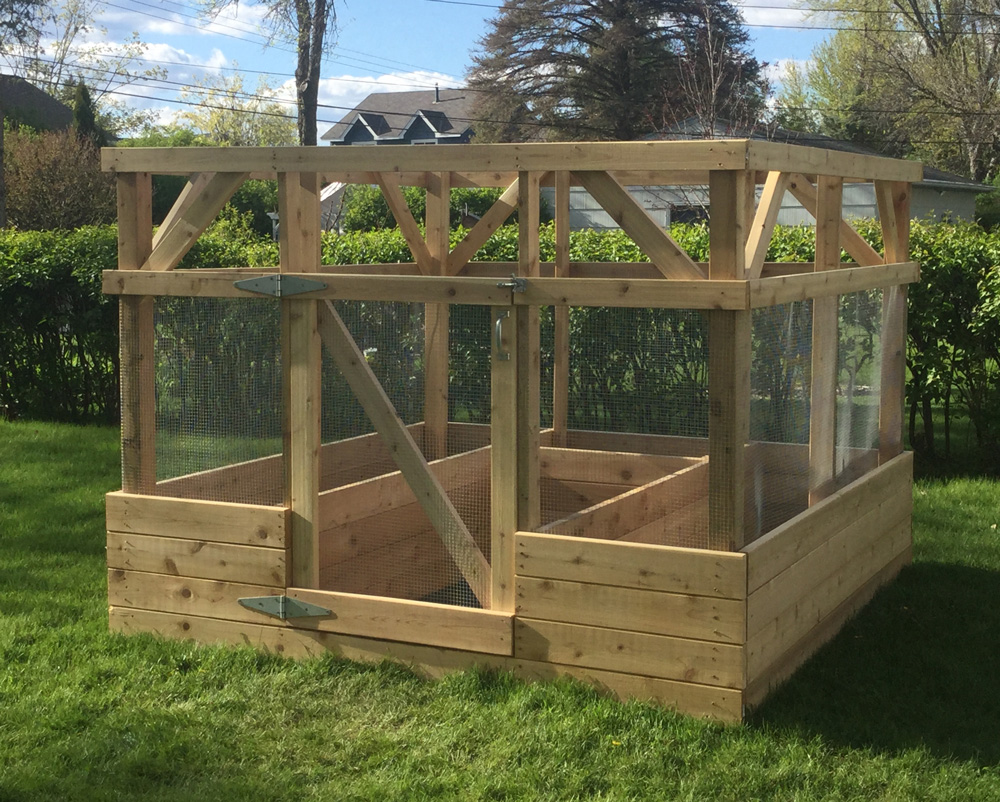
Easy DIY Garden enclosure plans by ANA-WHITE.com - minimal cutting and easy assembly!
Pin For Later!

Dimensions

Dimensions shown above
Preparation
Shopping List
- 4 – 4x4 @ 72”
- 3 – 2x4 @ 144” (cut the 72” long 2x4s from these)
- 13 – 2x4 @ 96” long
- 14 – 2x6 @ 96” long
- 1 – 1x2 @ 6 feet long (Recommend exterior grade lumber)
- About 200 - 3” self tapping exterior decking screws (I like these ones)
- 32 feet of 48” width chicken wire or mesh
- Staples for attaching chicken wire
Cut List
FRAME
- 4 – 4x4 @ 72”
- 6 – 2x4 @ 72”
- 7 – 2x4 @ 96”
- 7 – 2x6 @ 96”
- 2 – 2x6 @ 30-1/2”
- 2 – 2x4 @ 30-1/2”
- 8 – 2x4 @ 31” – Long point to long point measurement, both ends cut at 45 degrees off square, NOT parallel
RAISED BED
- 4 – 2x6 @ 96”
- 4 – 2x6 @ 38”
DOOR - suggest cutting door to fit the final opening
- 2 – 2x4 @ 46”
- 2 – 1x2 @ 33-1/2”
- 1 – 2x4 @ 53”
- 1 – 2x4 @ 33-1/2”
- 1 – 2x6 @ 33-1/2”
Instructions
Step 1
Step 2
Step 3
Step 4
Step 6
Step 7
Step 8
Step 9
Step 11
Finishing Instructions
Preparation Instructions
Fill all holes with wood filler and let dry. Apply additional coats of wood filler as needed. When wood filler is completely dry, sand the project in the direction of the wood grain with 120 grit sandpaper. Vacuum sanded project to remove sanding residue. Remove all sanding residue on work surfaces as well. Wipe project clean with damp cloth.
It is always recommended to apply a test coat on a hidden area or scrap piece to ensure color evenness and adhesion. Use primer or wood conditioner as needed.
It is always recommended to apply a test coat on a hidden area or scrap piece to ensure color evenness and adhesion. Use primer or wood conditioner as needed.
Project Type
Room






















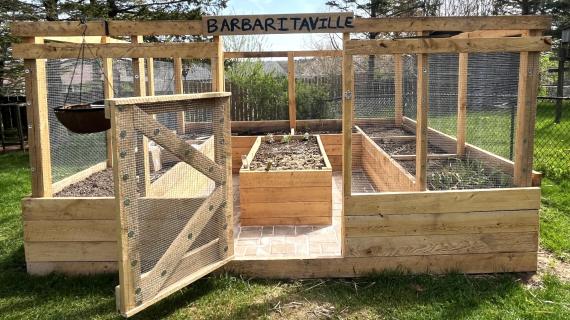

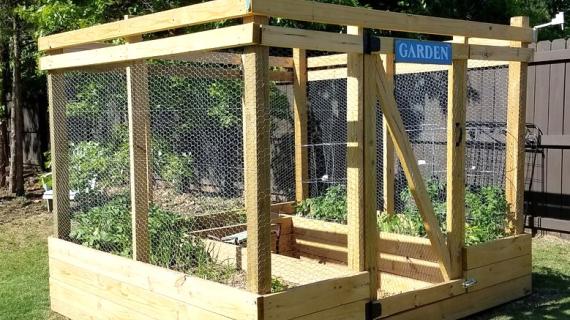
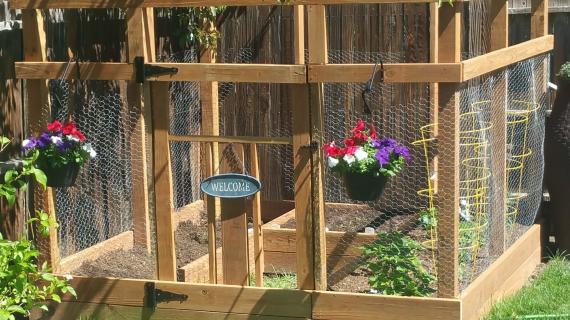

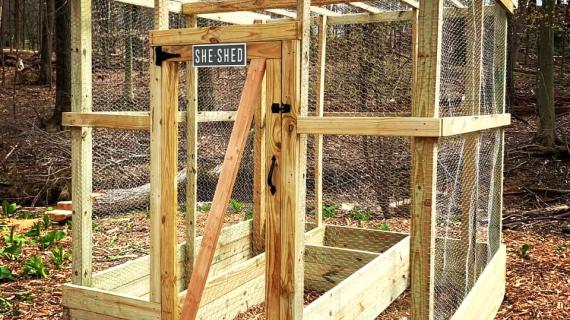
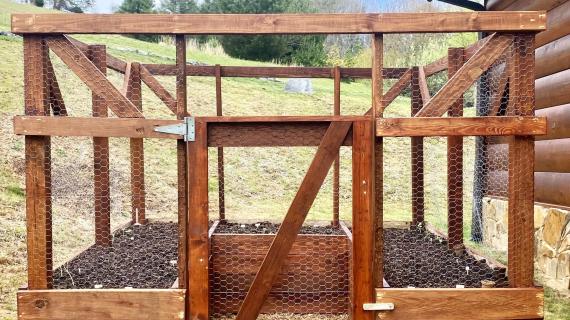
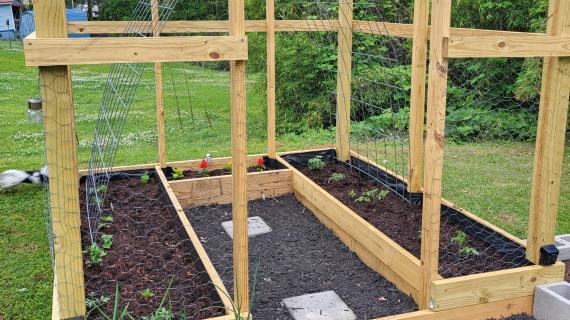



Comments
dblalack
Sat, 06/13/2015 - 10:14
for lisa
for lisa
balloongal247
Thu, 12/31/2015 - 09:57
Bears
Would this garden enclosure be sufficient to deter bears? My area apparently has some kind of bear problem, but I'd still like to be able to have a vegetable garden.
balloongal247
Thu, 12/31/2015 - 09:58
Bears
Would this garden enclosure be sufficient to deter bears? My area apparently has some kind of bear problem, but I'd still like to be able to have a vegetable garden.
Yukon-Joel
Fri, 04/08/2016 - 17:16
No bear proof
Bears wouldn't care about this being in their way.
balloongal247
Thu, 12/31/2015 - 09:59
oops double post
Oops, sorry for the double post. It wasn't showing that my post went through.
scottu
Mon, 01/13/2020 - 09:27
Note - Gate support in cad…
Note - Gate support in cad drawing is on backwards. Gate support in main photo is correct.
support should point down into the hinge, or gate will sag.
Love the design